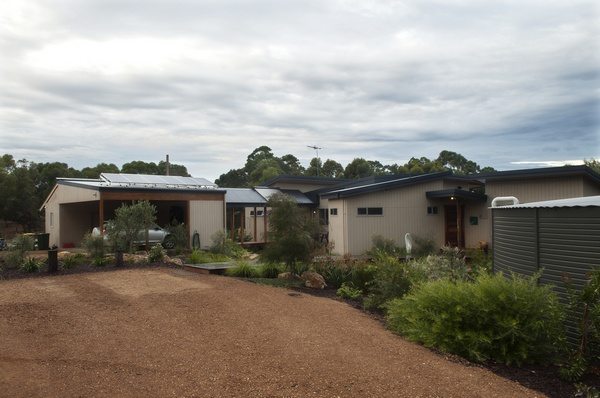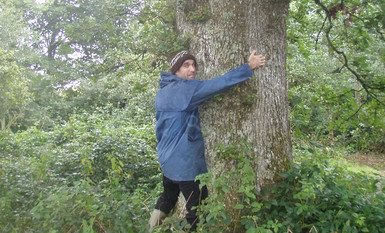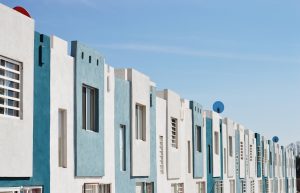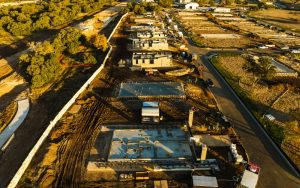Alex Bruce, co-founder at eTool
I often get asked by home-owners and owner-builders what really makes the biggest difference to the carbon footprint of a home design. As you’ve probably experienced, the response can be pretty confusing when all you really want to know is “How do I build low carbon?!” So to make things a little easier, here are my twelve essential bases to cover if you want to go zero carbon but still have a strict budget to work with…

1. Life Cycle Design Philosophy
What’s this “Life Cycle Assessment” or LCA thing about? Life Cycle Assessment can be used to actually calculate all the impacts of your design choices in terms of carbon, cost, GHG emissions, water, toxicity and more. Quantify and compare to improve your design and don’t forget to question everything!
2. Make it financially attractive
There isn’t much point making a house carbon neutral if it costs the earth…So invest in areas that are going to give you the best return financially and maximise your positive impact on the planet. Before you commit to any design decision, ensure you understand the capital outlay, cost savings and importantly the resulting carbon footprint.
3. Design for the future…make it last
Is your design a fashion fad or a timeless classic? Unfortunately most houses are lucky to hit their 40th birthday (in Australia) before they are knocked down, never making it to their retirement age. So it’s important to consider the following:
- Planning and density – don’t build a detached house in a high density suburb or it will just get knocked over and replaced with townhouses.
- Future proof it – think ahead to what people might want after you’ve finished living there.
- Quality build – a house that is energy efficient, comfortable, functional, well built and well finished is going to last a lot longer than a dated, impractical, energy guzzling beasty.
- Durability – of course if you are aiming for the house to live to a ripe old age then use durable materials.
4. Make it functional
The more people a house can house the less impact per person that house will have on the environment – it’s that simple! Plus, the more functional a building is, the more likely it will live to retirement instead of retrenchment.
5. Quality not quantity
In Australia our dwellings have grown 40% in size in the last twenty years with 10% less people living in them. That means a house built in 1990 is 40% smaller than what we are building now and pretty much has 40% more impact on energy bills and the environment. So, build a smarter, smaller house with the right architecture that works well and feels comfortable!
6. Low embodied energy materials
Try to use materials that aren’t responsible for too much – or zero – environmental damage in their manufacture. Think about where and how that product started its life and how did it get here?
As we transition towards renewable energy, the carbon impact of operating a house (like air conditioning it) will be reduced. So, building with materials that result in high carbon emissions become even more important as you can never get them back.

7. Reduce Reuse Recycle materials
Yep this old chestnut again!
- Reduce – redundant materials and use raw or natural finishes that don’t require ongoing maintenance.
- Reuse – whatever you can from the last building or other local “retrenched” (knocked down) buildings.
- Recycle – materials from the last building and incorporate recycled and recyclable materials into the design.
8. Local local local but sometimes not…
It makes sense to use locally produced materials and trades as less transport usually means less carbon. However sometimes you’ll be looking at a compromise between a material that is local but with a high embodied energy versus an imported product that might be recycled. And when you’re considering transportation, investigate efficiency: could shipping from China be less than trucking from Perth to Melbourne?
9. Make it “climate sensible”
After embodied energy, “heating and cooling” are big factors when it comes to your home’s carbon footprint. We are getting better at this impact and Australia now have “Six Star” regulations that ensure that any new home built will have a fairly good level of thermal performance. It’s good to aim higher than this, but make sure you’re not compromising other aspects of your carbon footprint or return on investment. Consider how much energy and cost went into making that lovely big concrete slab you’ve used to get your thermal mass and star rating up….
10. Hot water (don’t land in it)
When it comes to running your home, hot water and appliances will impact your energy bills the most, so consider them right from the start. Hot water systems such as solar hot water shouldn’t be viewed as a “bolt on” or “wait and see if we’ve got the budget” item. Make an informed decision on capital outlay versus ongoing savings.
11. Renewable energy
We all love renewables. They can provide a great return on investment and at the same time lower your overall carbon footprint. That said try not to fall into the trap of thinking “no dramas, I’ll just add a few more solar panels to deal with that.” The embodied energy that goes into making things can never be recovered so make sure you always go back to – where did it come from?
12. Low carbon doesn’t always mean sustainable…
Reducing your home’s carbon footprint is only one metric of sustainability and it’s just as important to consider the way we behave in our own homes. Technology like real time energy monitoring has shown to reduce energy consumption by around 10% by affecting occupant behaviour. That’s a bigger impact than increasing your star rating from six to seven stars!
I hope this has helped clear the ‘low carbon fog’ for you. If you’ve got any questions or suggestions, or maybe a viewpoint, scroll down to the ‘Comments’ section and jot them down there. I’d be very happy to respond.

Alex Bruce, co-founder at eToolAlex Bruce is a renewable energy engineer and co-founder of eTool, a life cycle assessment software company that helps homeowners understand and lower the environmental impact of their home designs.
eTool was formed in 2010 by engineering uni mates Rich and Alex who knew that climate change was a problem worth solving and that they should give it their best shot. Over the last three years, they’ve worked hard, championed through full time jobs, late nights, weekends and holidays to get eTool and eTool LCA software ready, out there and being used globally by the guys that can really make a difference…you.
For more information about low carbon building design, visit www.etool.net.au. They have a very informative newsletter





